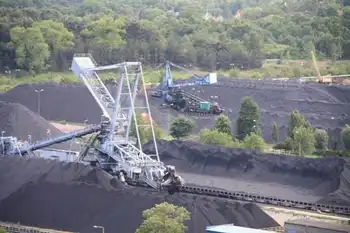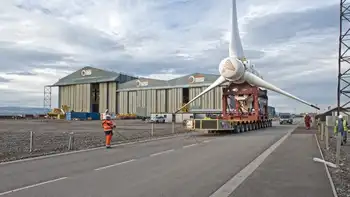Montana considers cashing in on 1.2 billion tons of coal
By Associated Press
NFPA 70e Training - Arc Flash
Our customized live online or in‑person group training can be delivered to your staff at your location.

- Live Online
- 6 hours Instructor-led
- Group Training Available
Experts describe the state's Otter Creek reserve as world class: more than 1.2 billion tons of coal massed beneath the rolling hills of the Powder River Basin.
Yet its prospects are uncertain given market trends and the turbulent politics surrounding an industry seen as a main contributor to global warming. And it's unknown if companies are willing to invest the estimated $1.7 billion needed to develop the mine.
Supporters of mining say it could bring hundreds of jobs to the cash-starved Northern Cheyenne. A railroad needed to move the fuel to market could open for development another billion-plus tons of coal on the Northern Cheyenne reservation, lifting southeastern Montana's economy for decades.
"We've been waiting for this," said Don McDowell, a Powder River County Commissioner who left Montana after high school to find work in the mines of neighboring Wyoming.
Standing in the way are conservation groups organizing local landowners to oppose the project. Factions within the Northern Cheyenne are concerned a mine would industrialize their ancestral homeland.
"The companies that want to do this, they act like locusts and move on, leaving nothing behind but bad water and dead cattle," said tribal member Jody Curley.
The tribe has 9,500 members, with 4,000 on the reservation. Curley, 37, works as a convenience store clerk in Lame Deer — among the few jobs available in a rural outpost where one in every two people live in poverty.
As he sat at the edge of town's main drag on a recent evening, watching cars motor by, Curley said the tribe was at risk of trading its heritage "for dollar signs."
The Montana Land Board is to decide in September whether to seek a company to mine the reserve, following recent public hearings that revealed a local community divided over the proposal.
The board is chaired by Gov. Brian Schweitzer, an outspoken coal advocate who has said the tracts will be put up for auction.
"We have some interest from people who would like to potentially lease those tracts from us," Schweitzer said in an interview. "We're going to continue to move the process forward. We're going to find out what it's worth."
Coal production nationwide has plummeted as the flagging economy dampens demand for power. Meanwhile, a shift to renewable energy threatens to erode coal's status as the fuel of choice among electric utilities.
Nationwide, monthly production is at its lowest level in more than five years. It's down more than 19 percent from its peak last October, according to the latest figures from the Department of Energy.
But a mine at Otter Creek could still pencil out financially for a company willing to commit substantial money up front, said Gary Stubblefield, vice president of Utah-based Norwest Corporation. His consulting firm recently completed an appraisal of the state-owned reserve.
Montana has about 600 million tons of coal at Otter Creek intermixed with a comparable amount owned by Great Northern Properties. The private ownership is a vestige of federal land grants given to the Great Northern Railroad by Congress in the late 1800s.
Stubblefield said only the biggest coal companies were likely to be interested in a deal with the state and Great Northern, which have agreed to coordinate development efforts.
"They're not going to come in for a small amount of coal," Stubblefield added. "I don't know of any other location that could tie up, under a combined project, that many tons today."
He said a mine could attract spin-offs, too, such as a coal-to-liquids plant that could draw on Otter Creek's reserve for decades.
Lining up behind development is a powerful alliance of coal industry supporters. That includes many of the area's elected officials and proponents of the Tongue River Railroad, a long-stalled $341 million line proposed from Miles City south through Otter Creek to the Wyoming border.
The railroad would cut through dozens of ranches. Opposition to the line has long been a rallying cry for those landowners nervous about the change coal development would bring.
The fight has attracted the Sierra Club, which along with the Billings-based Northern Plains Resource Council has organized ranchers and tribal members against the project.
Aiding them behind the scenes has been candy company billionaire Forrest Mars Jr. He owns the 140-square-mile Diamond Cross Ranch along the Tongue River south of Ashland and doesn't want the railroad to cross his property.
In June, the Northern Cheyenne council endorsed developing Otter Creek — with the caveat that a 2002 settlement agreement between the tribe and the Land Board is honored.
The agreement says any company that mines the tracts must give hiring preference to tribal members. As part of the settlement, Montana's Congressional delegation promised the tribe $10 million a year for seven years to offset mining impacts.
The Northern Cheyenne's leader, President Leroy Spang, worked 32 years in coal mines around the town of Colstrip, about 30 miles north of the reservation. Spang was elected last year on a pro-development platform.
"We would be neglecting our people's best interests if we opposed Otter Creek," he said. "We've got nothing here. We're broke and we need money for education and for retirement. And there's so much coal on our side, in a hundred years you couldn't mine it."











